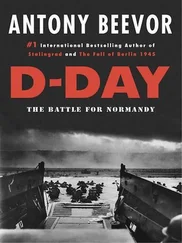The French, led by Marshal Ney in person, commanding those parts of d’Erlon’s corps that had not been lost or demoralised earlier in the battle, had set the roof of the farmhouse on fire. By this stage the nine companies inside La Haye Sainte only had an average of between three and four rounds of ammunition left per man. Each had started the battle with sixty rounds, which Captain Becke considered ‘an inadequate amount, considering the nature of the fighting and the importance of the post’. 1Yet the arguments made by several historians that ammunition should have been stored inside the farmhouse do not address the problem of the burning roof, and therefore the possibility of a catastrophic explosion in the courtyard.
The struggle for La Haye Sainte was described by Charles O’Neil:
The combat now raged with unabated fury. Every inch of ground was disputed by both sides, and neither gave way until every means of resistance was exhausted. The field of battle was heaped with the dead; and yet the attacks grew more impetuous, and the resistance more obstinate. 2
What almost all the authoritative early accounts on Waterloo and the eyewitnesses do agree upon — including Captain Becke, Henri Houssaye, Major Baring, Sir James Shaw Kennedy, Sergeant-Major Cotton, Captain Siborne, Colonel Chesney and Ney’s aide Colonel Heymès — is that La Haye Sainte fell to the French sometime between 6 and 6.30 p.m. The King’s German Legion were forced out of their citadel, by then collapsing in flames, at terrible cost. Of Major Baring’s original 400 defenders only forty-two were still fully operational by the end of the battle, the others all being killed, wounded or captured, an appalling attrition rate. Unlike the 95th Rifles just outside the farmhouse, there had not been a single deserter. 3
For all his shortcomings earlier on in the battle — indeed during the campaign — Marshal Ney now took speedy advantage of the fall of this strategically vital farmhouse in the centre of the battle field, commanding the road from Charleroi to Brussels. This was the most dangerous moment in the entire battle for Wellington, affording as it did Napoleon’s best opportunity to punch a hole in the Anglo-Allied centre, before the large-scale arrival of the Prussians sealed his fate.
Ney brought up horse artillery, which started to pour fire into the Anglo-Allied line at devastatingly close range. It was here that the Inniskilling Regiment took the highest casualties of any infantry unit in the army. On the battlefield today is a memorial stone commemorating the stand of the Inniskillings, and Wellington’s verbal tribute to their sacrifice: ‘Ah, they saved the centre of my line.’
Ney also brought forces to bear on the Sandpit, forcing out the 95th Rifle Regiment (later to become the Royal Greenjackets). According to a new history of the 95th, a hundred Riflemen were so demoralised during the course of the engagements there that they simply absented themselves without good reason for the rest of the battle. 4An attempt to recapture the farmhouse by Colonel Ompteda and the 5th KGL was defeated, leaving Ompteda dead, the battalion virtually wiped out and the King’s colours taken. The centre of the Anglo-Allied line wavered momentarily under the terrific onslaught, and this was perhaps the psychological moment at which Napoleon should have flung every available man into the action in front of the farmhouse.
That he failed to do so cannot be put down to the Emperor’s lack of nerve, or lack of understanding about what was happening. His line infantry, exhausted after d’Erlon’s failed efforts, were in no state to deliver the killer blow, just as his cavalry had blown itself riding in vain around the British squares. Furthermore Billow’s corps had meanwhile retaken the village of Plancenoit, less than a mile to the east of La Belle Alliance, forcing out the Young Guard house by house and therefore threatening the whole right flank. Thus when Ney sent Colonel Heymès to beg for fresh troops to exploit the perceived weakness in Wellington’s centre, Napoleon responded with heavy sarcasm: ‘Des troupes! Où voulezvous que j’en prenne? Voulez-vous que j’en fasse?’ (Troops! Where do you want me to get them from? Do you want me to make them?’)
Of course the Emperor still had the bulk of the Imperial Guard to commit to the fray, but he tended only to do this at the precise moment to turn victory into a rout, which this clearly was not. Meanwhile, Wellington was in a scarcely better position, and gave repeated orders for his line to stand fast, understanding that even a modest re-alignment backwards might be misinterpreted as a withdrawal by the men themselves, which might itself turn into panic. Soldiers at the limits of their endurance, even veterans, could break and run, and Wellington — coolly riding along the line wherever he was most needed — placed cavalry regiments from his reserve directly behind infantry battalions that seemed most at risk. (When a Dutch regiment started to move back about ten yards, Wellington personally rode over to prevent it breaking and positioned the 11th Light Dragoons accordingly.)
It is astonishing that any verbal orders could be heard at all above the din of battle, a hellish wall of sound that Charles O’Neil vividly described:
The continued reverberations of [the] pieces of artillery, the fire of the light troops, the frequent explosions of caissons blown up by shells, the hissing of balls, the clash of arms, the roar of the charges, and the shouts of the soldiery, produced a commingling of sounds whose effect it would be impossible to describe. 5
The importance of bugle-calls, especially in cavalry charges, cannot be overstated as a means of officers communicating with their men.
If any crack in the badly damaged Anglo-Allied line had taken place, it is certain that it would have been punished badly by the French, since a large body of cuirassiers had been positioned in the dip between Hougoumont and La Haye Sainte directly the latter had fallen, out of sight of the Allied guns.
The Anglo-Allied brigades had both been very badly mauled, and the gap between General Sir Colin Halkett’s right and Major-General Sir James Kempt’s right was a danger area for Wellington, just as it provided Napoleon’s only genuine opportunity for victory of the whole day. A strike by the Imperial Guard there at the correct psychological moment might well have broken Wellington’s line and split his force in two, but even then it is doubtful that there were enough fresh French troops capable of exploiting the opportunity to the full. ‘History,’ wrote the great Dutch historian Pieter Geyl in his book Napoleon: For and Against, ‘is an argument without end,’ and the debate about whether Napoleon might have prevailed with a superhuman push against Wellington’s centre will certainly not end soon.
Wellington was quick to recognise the danger point in his line and close it. ‘I shall order the Brunswick troops to the spot, and other troops besides,’ reads one of the surviving orders from this critical period to a subordinate commander. ‘You go, and get all the German troops of the division to the spot that you can, and all the guns that you can find.’As Shaw Kennedy later wrote of this crucial stage:
Of such gravity did Wellington consider this great gap in the very centre of his line of battle, that he not only ordered the Brunswick troops there, but put himself at their head: it was even then with the greatest difficulty that the ground could be held … In no other part of the action was the Duke of Wellington exposed to so much personal risk as on this occasion, as he was necessarily under a close and most destructive infantry fire at a very short distance; at no other period of the day were his great qualities as a commander so strongly brought out, for it was the moment of his greatest peril as to the result of the action. 6
Читать дальше
Конец ознакомительного отрывка
Купить книгу











